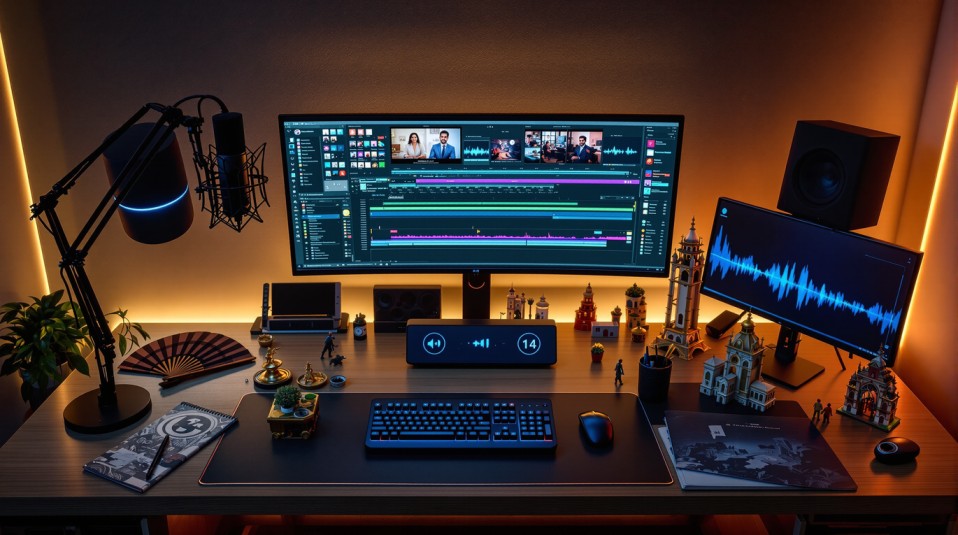Did you know that an overwhelming 87% of online students indicate they would be more likely to finish a course if it was offered in their preferred language?
Yet, the majority of online courses remain available in just one language, creating an invisible wall between valuable educational content and countless potential learners across the globe. Research indicates that students studying in a non-native language typically retain 30% less information compared to those learning in their first language.
This is precisely why video translations have emerged as a revolutionary solution for course creators aiming to reach an international audience. Through the use of subtitles, dubbing, or a strategic combination of both, translating your course videos can significantly boost both engagement levels and completion rates.
Are you prepared to elevate your course into a multilingual educational experience? This comprehensive guide will provide you with all the essential information about creating perfect video translations for your online courses, covering everything from selecting the most appropriate translation approach to implementing the most effective tools available.
Why Video Translation Matters for Online Education
Video translation has become increasingly crucial in online education, breaking down language barriers for learners worldwide. The global shift in online learning has driven course creators to discover efficient methods of making their content accessible to international students.
Studies consistently demonstrate that learners receiving instruction in their first language show better comprehension and long-term retention. This becomes particularly important when teaching specialized or complex topics where precise understanding is crucial for success.
Moreover, translation significantly expands your potential audience. By offering your content in multiple languages, you can reach students globally, regardless of their language proficiency. This enhanced accessibility also enables course creators to increase their enrollment numbers and build a strong international presence.
For an even deeper understanding of how this expands your reach, check out how AI video translation boosts course reach.
Subtitles vs. Dubbing: Choosing the Right Format
When choosing between subtitles and dubbing for your course videos, consider your resources, production schedule, and target audience preferences.
Subtitling Benefits
- More cost-effective than voice-over solutions
- Faster production
- Maintains the original instructor’s voice and tone
- Useful in quiet or public settings
- Improves SEO through text indexing
Dubbing Benefits
- Offers a more immersive experience
- Keeps viewers focused on visuals
- Ideal for content with multiple speakers or fast pace
- Preferred in regions accustomed to dubbed media

Understanding regional preferences is also important. For example, if your course targets European markets, it may be helpful to learn why some audiences prefer dubbing.
Preparing Your Course for Translation
Simplify Your Script
Clarity is essential. Avoid jargon, idioms, and cultural references that don’t translate well. Keep your language direct, and remember that languages like German or Spanish can require more space than English to say the same thing.
To further prepare for multilingual formats, explore tips on localization in content creation.
Segment Your Video
Breaking your video into logical parts improves translation accuracy and production speed. Start with a full transcript, and divide content by topic or scene.
Picking the Right Translation Method
The method you choose depends on time, budget, and the quality you want.
Manual Translation + Voice Actors
The traditional route, best for high-touch, emotionally rich content. Ideal for premium or signature courses.
AI Dubbing Tools
Fast, scalable, and increasingly lifelike. Tools like Dubverse allow for quick adaptation into multiple languages at scale. Learn how AI dubbing saves time and money.
Hybrid: AI + Human Review
This method combines the speed of AI with the nuance of human review, balancing quality and cost-efficiency.
Tools That Make Translation Easier
Top AI Dubbing Platforms
- Dubverse.ai: Especially strong for Indian languages and regional accuracy
- HeyGen: Offers branded avatars
- Rask AI: Known for high-accuracy lip-sync dubbing
For an in-depth breakdown, check out our guide to the best AI dubbing tools.
Subtitle Generators
- Adobe Express, Canva, VEED.io, and Kapwing simplify the subtitling process
- Auto-generation supports multilingual accessibility and SEO
Want to know how subtitles impact engagement? Here’s how subtitles improve video engagement.
Voice Cloning Tools
Voice consistency helps build trust. Tools like Descript and ElevenLabs let you create a digital version of your voice for localization.

Final Steps: Review, Sync, and Publish
Ensure Synchronization
Check for lip-sync accuracy and timing across all versions. Use tools that support frame-level edits and offer recut/offset sync adjustments.
Add Captions and Transcripts
Provide full accessibility by adding closed captions and downloadable transcripts. This improves SEO and serves differently-abled learners.
Test Across Platforms
Ensure compatibility with different devices and LMS platforms. Run final QA checks for video resolution, audio clarity, subtitle accuracy, and more.
If you’re wondering how creators manage multilingual channels, check out global YouTube strategies.
Conclusion
Video translation emerges as an essential tool for course creators aiming to transcend language barriers. Through methodical preparation, suitable translation approaches, and appropriate technological solutions, educational content can effectively serve global learners.
Whether you’re leveraging AI or working with professionals, the key is to align your translation method with your goals. If you’re new to this, consider starting with how to create multilingual courses with AI dubbing.
As the global e-learning landscape expands, course translation will no longer be a nice-to-have—it’s a necessity.

